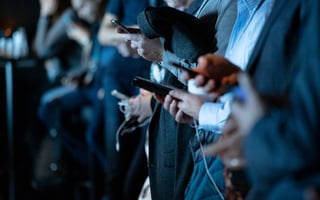This time of year used to be known as silly season.
If you’ve been on social media recently, chances are you may have seen posts calling for a boycott of a particular brand.
#Boycott has become an increasingly popular way of consumers showing their displeasure.
It has become almost automatic for some users to call for a boycott as soon as a brand does something they don’t agree with.
Nike, Heck, Paperchase, Pepsi, Starbucks and Uber are just a small selection of brands that have recently been the subject of calls to be cold-shouldered and found themselves in crisis media management situations.
The reasons for this backlash are numerous. Perceived political leanings, misjudged marketing campaigns, damaging video footage and PR missteps, and, often, misinformation, are among the factors which have led to calls for boycotts.
So how should brands respond to this risk?
Do you need to respond?
The starting point is to consider whether you really need to respond to social media calls for a boycott of your organisation.
Of course, consumers want to feel that their voices are being heard, but these online protests happen so often and, in most cases, they quickly fizzle out as attention swiftly moves to the next brand that people believe has done wrong.
These protests rarely last long in the memory and there is an argument that their impact has been diluted.
It is also worth considering whether those vowing not to use your services again are genuine customers or are people simply jumping on the latest trending bandwagon.
Additionally, there’s a big difference between vowing not to do something on social media and sticking to that decision when it impacts your life. For example, when #DeleteUber was trending, 200,000 of the 40 million people who have the app actually went ahead with the threat.
Negative coverage is potentially a bigger risk than any real impact on sales as often these boycotts are covered by the mainstream media.
Reputation matters and that’s what often triggers organisations into issuing a response.
But sometimes responding only serves to amplify an issue. When Paperchase found itself in social media storm for running a promotional campaign in the Daily Mail, responding to the backlash pushed the story to a much wider audience.
Let me explain that. Stop The Hate, the group which orchestrated the backlash, had 80,000 followers at the time. The Daily Mail had 120m readers, so even if every one of Stop The Hate’s followers retweeted, there would have been a reach of 0.0006 per cent.
But the card company’s Twitter response was picked up by the Huffington Post, an organisation with a reach of 189m, propelling the story to a much wider audience.
Action
Of course, there are some situations where you are simply going to have to respond to boycott calls, particularly when it is obvious something has gone wrong.
And in these situations, normal crisis media management rules apply.
You need to respond quickly.
If you accept that you have done something wrong, apologise and show what action you are taking to ensure it does not happen again.
This was one of the things Starbucks did really well when #BoycottStarbucks spread across social media.
It found itself in the midst of a storm when footage emerged of two black men being arrested in one of its Philadelphia branches after a member of staff accused them of trespassing. That footage went viral.
Its first response was slow and missed the mark. But from that point, CEO Kevin Johnson gripped the incident, issuing a video apology and promising to close more than 8,000 of its stores so employees could attend ‘racial bias education’.
Have a plan
Like other forms of crisis media management, the key is to be prepared and know how you will respond before the worst happens.
Although it is often the bigger brands that are caught up in these social media boycotts, it is important to remember they can affect smaller organisations.
When Boris Johnson visited family-owned sausage company Heck as part of his campaign for the Conservative Party leadership, it resulted in a considerable backlash with #BoycottHeck trending.
And it was a reaction the company appeared ill-prepared to handle, initially remaining silent before eventually issuing a muddled, rambling response which did little to halt the backlash.
Monitor
If your organisation monitors social media effectively, then your social media manager is likely to become the first person to become aware of a boycott.
The quicker an organisation becomes aware of the protests, the quicker it can make a decision on whether it needs to respond and whether crisis plans need to be activated.
Human
Your customers want to know that you care, so your response needs to show compassion, concern, honesty and empathy.
If you are sorry about whatever has triggered the boycott calls, make sure it looks like you mean it.
Some organisations feel compelled to try to respond to every individual tweet. If you are going to do that, have some flexibility in your messaging so that responses don’t sound robotic.
Calls for boycotts are commonplace and just like a traditional crisis, it is more a case of when rather than if your organisation will be in the firing line.
Media First are media and communications training specialists with over 30 years of experience. We have a team of trainers, each with decades of experience working as journalists, presenters, communications coaches and media trainers.
Click here to find out more about our highly practical crisis communication and social media training courses.
Subscribe here to be among the first to receive our blogs.




